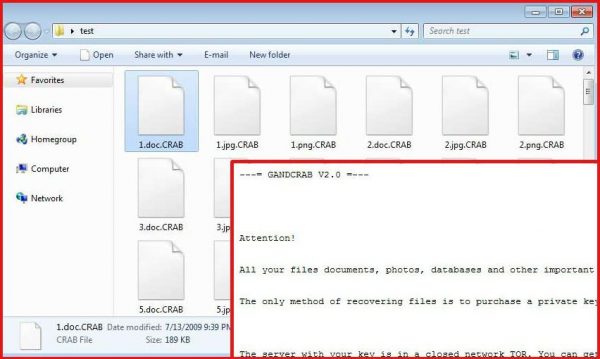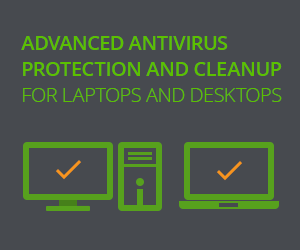GranCrab extortion virus spotted in February 2018 hit a number of users. This attracted authorities and security firms. In order to help the victims who suffered the ransomware invasion, Romanian national cybersecurity and Europol hacked the remote command-and-control center behind the malware. The server contained some of the keys applicable to recent attacks.
As those decryption keys were not directly applicable, private security companies broke in and developed software capable of making use of the catch. The victims in need hopefully decrypted their data with those key and with the software.
The crooks behind the attacked ransomware soon came up with their announcement. They promised to improve the existing version, including the security of the remote control server. They were true to their promise as on March 5, 2018, another virus surfaced. IT researchers promptly traced it back to the original release. It contained several essential differences.

The crooks, of course, moved to another command-and-control server abandoning the one hacked by the authorities. They have attributed somewhat mocking names to their new hosts. politiaromana.bit clearly refers to Romanian police, malwarehunterteam.bit mentions the white-hat hackers also engaged in the campaign against the ransomware.
To reach those servers the virus is to complete a rather complex procedure. It does not use a traditional DNS. Just like the initial version, the second one makes use of TLD. This allegedly aggravates unauthorized access to the remote server. As we can see, the authorities have nevertheless been able to overcome this protection measure. On the other hand, this kind of DNS connection indeed complicates communication of the ransomware with its remote nod. It might simply fail to establish a connection and is thus unable to proceed with the encryption.
In general, the second release does not differ much from the original. The essential novelties, apart from the above, include as follows:
- The ransomware adds .CRAB instead of .GDCB as an extra extension for affected files.
- CRAB-Decrypt.txt instead of GDCB-DECRYPT.txt in terms of the name for the ransomware’s note. CRAB-Decrypt.txt also features an amended message prompting to use Tox as a tool for further communication.
- GUI for the ransom transaction has undergone substantial updates, both in graphics and messages.
- The authorities and security enthusiasts are making their best to prevent further propagation of GranCrab V2.0 extortion-for-ransom and obtain the keys needed to undo the data decryption already completed.
Automatic removal of GandCrab V2.0 Ransomware
The benefits of using the automatic security suite to get rid of this infection are obvious: it scans the entire system and detects all potential fragments of the virus, so you are a few mouse clicks away from a complete fix.
- Download and install recommended malware security suite
- Select Start Computer Scan feature and wait until the utility comes up with the scan report. Proceed by clicking on the Fix Threats button, which will trigger a thorough removal process to address all the malware issues compromising your computer and your privacy.
Restore files locked by GandCrab V2.0 Ransomware
New GandCrab V2.0 Ransomware represents a unique category of malicious software whose attack surface reaches beyond the operating system and its components, which is why removing the virus itself is a part of the fix only. As it has been mentioned, it encrypts one’s personal information, so the next phase of the overall remediation presupposes reinstating the files that will otherwise remain inaccessible.
-
-
Launch data recovery software
Similarly to the rest of its fellow-infections, GandCrab V2.0 Ransomware most likely follows an operational algorithm where it erases the original versions of the victim’s files and actually encrypts their copies. This peculiarity might make your day, because forensics-focused applications like Data Recovery Pro are capable of restoring the information that has been removed. As the virus further evolves, its modus operandi may be altered – in the meanwhile, go ahead and try this.
-
-
Take advantage of Volume Shadow Copy Service
This technique is based on using the native backup functionality that’s shipped with Windows operating system. Also referred to as Volume Snapshot Service (VSS), this feature makes regular backups of the user’s files and keeps their most recent versions as long as System Restore is on. GandCrab V2.0 Ransomware hasn’t been found to affect these copies therefore the restoration vector in question is strongly recommended. The two sub-sections below highlight the automatic and manual workflow.
- a) Use Shadow ExplorerShadow Explorer is an applet that provides an easy way of retrieving previous versions of files and folders. Its pro’s include an intuitive interface where the computer’s entire file hierarchy is displayed within one window. Just pick the hard disk volume, select the object or directory to be restored, right-click on it and choose Export. Follow the app’s prompts to get the job done.

- b) Use file propertiesEssentially, what the above-mentioned Shadow Explorer tool does is it automates the process that can otherwise be performed manually via the Properties dialog for individual files. This particular approach is more cumbrous but just as effective as its software-based counterpart, so you can proceed by right-clicking on a specific file, which has been encrypted by GandCrab V2.0 Ransomware, and selecting Properties in the context menu. The tab named Previous Versions is the next thing to click – it displays available versions of the file by date of the snapshot creation. Pick the latest copy and complete the retrieval by following the prompts.

-
Data backups work wonders
Ransomware like GandCrab V2.0 Ransomware isn’t nearly as almighty and destructive in case you run regular file backups to the cloud or external data media. The virus itself can be completely removed in a matter of minutes, and the distorted information can then be just as easily recovered from the backup. Luckily, this is a growing trend, so ransom Trojans are hopefully going to become less subversive in the near future.
Verify thoroughness of the removal
Having carried out the instructions above, add a finishing touch to the security procedure by running an additional computer scan to check for residual malware activity
